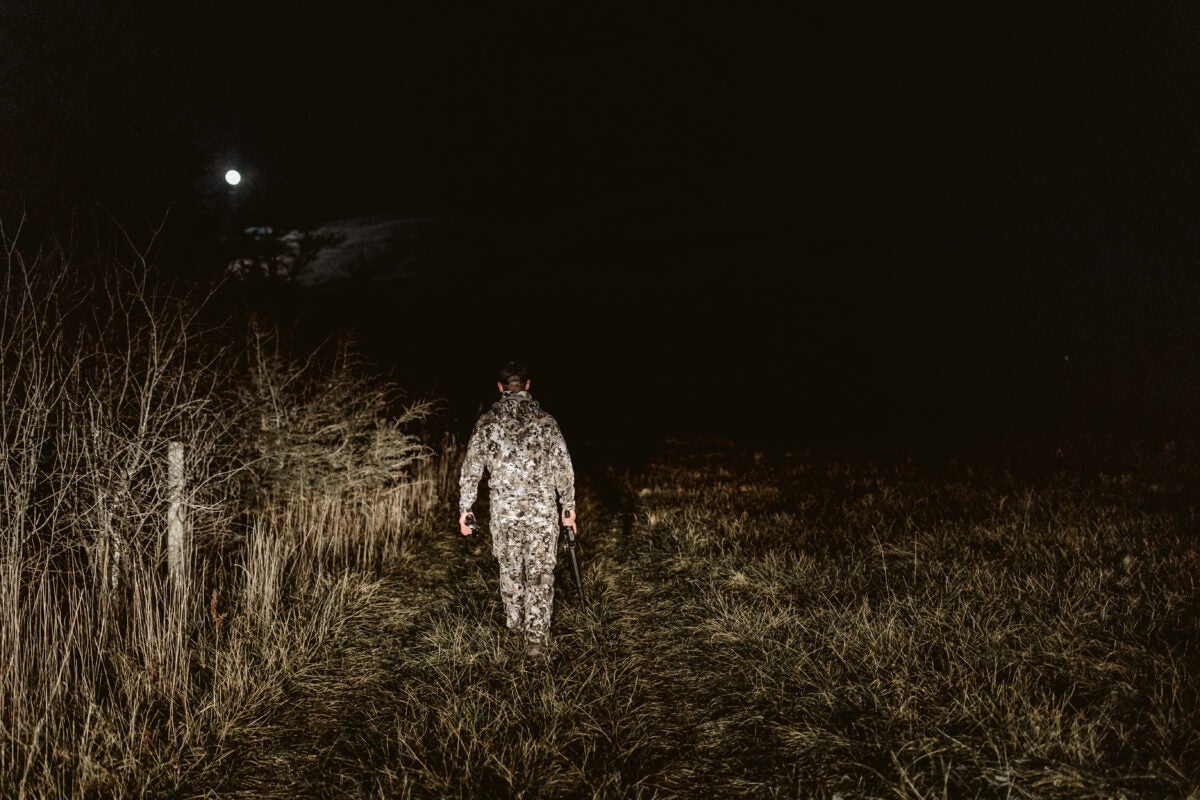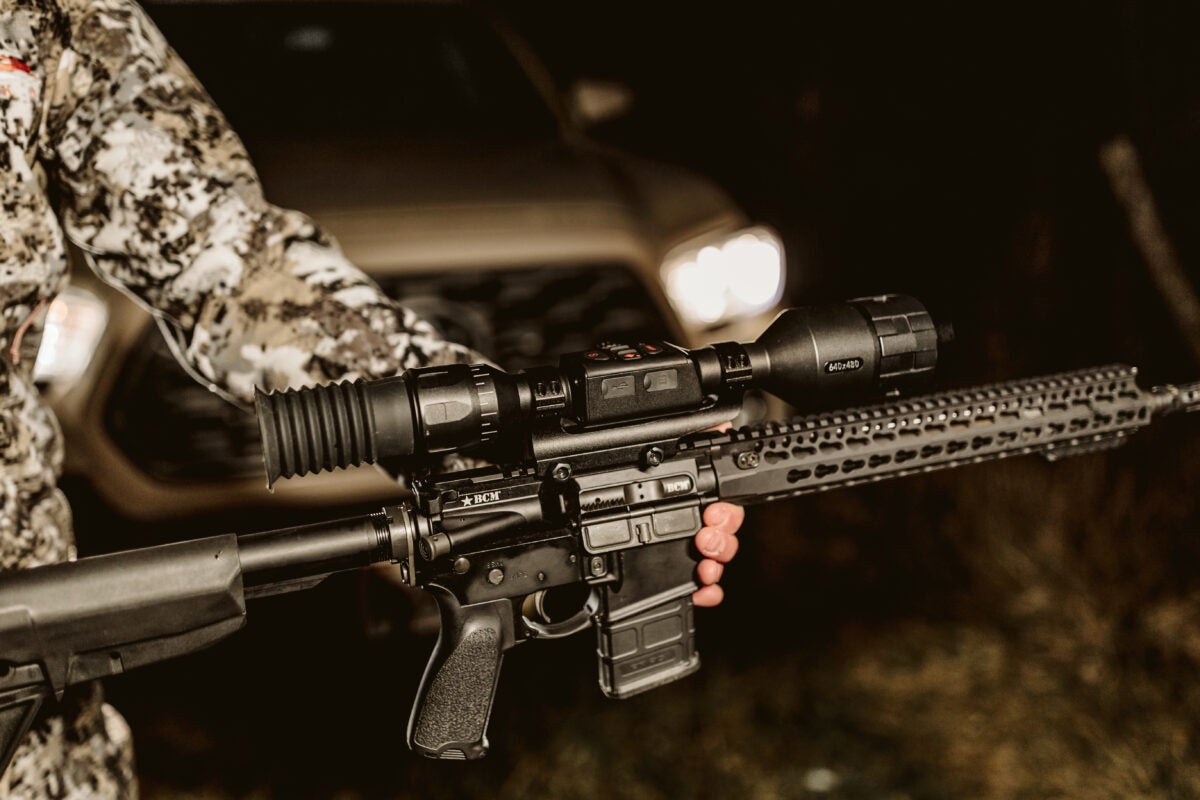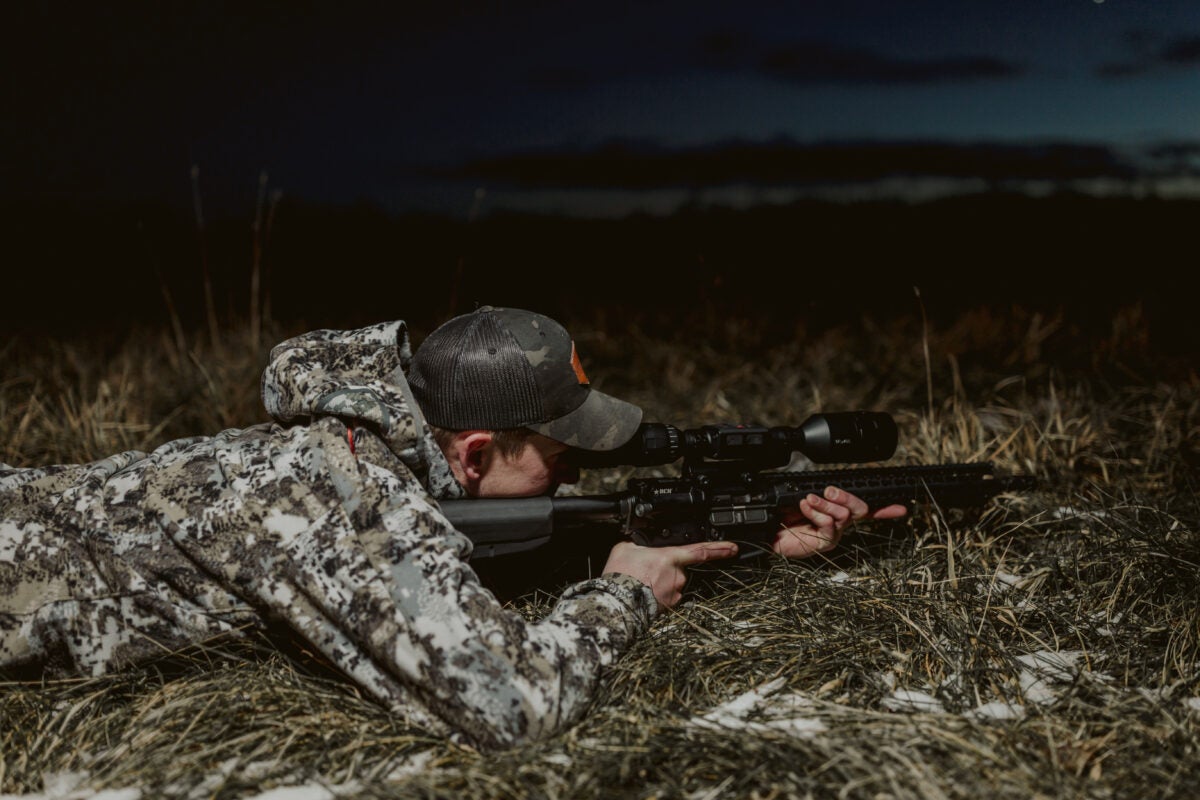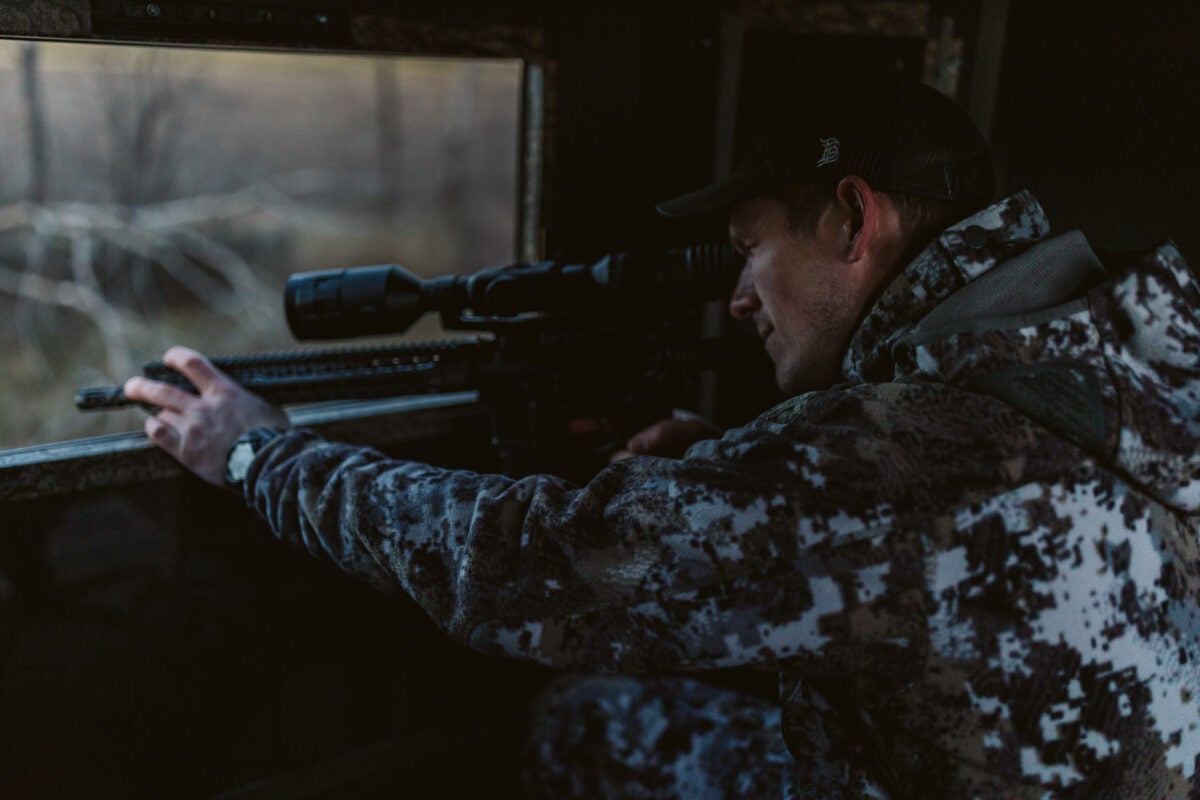Coyote Hunting Equipment: Everything A Beginner Needs To Get Started
Wes Littlefield 02.23.25

As a hunter, I often get wrapped up in having the latest and greatest gear to tackle the game I’m pursuing. Having better gear can give you a slight edge, but the following coyote hunting equipment is not the magic bullet for perfect varmint hunting trips. You still must develop and hone your skills to be as effective as possible.
Continue reading to see the list I compiled of all the coyote hunting gear you need and some of the gear that makes varmint hunting even more enjoyable.
Essential Coyote Hunting Equipment
Before we dive in, I want to clarify that this article focuses on coyote hunting, not trapping, for coyote population control. So, I left gear like foot traps and attractant scents off the essentials list. I enjoy coyote hunting because it takes very little gear to get started. Here’s what you’ll need for consistent, successful coyote hunts.
- Firearm/Ammo
- Optics
- Calls
- Decoys
- Camo
Let’s get a little more specific below.
Coyote Hunting Firearms & Ammo
There’s no need to overcomplicate which firearms, cartridges, and ammo will work for coyote hunting. Chances are you own one that will work. However, if you’re buying a gun specifically for varmint hunting, I’d recommend the .22-250 Remington.
Several 22-250 Rem ammo and firearm options are perfect for coyote hunting. Other effective cartridges are .223 Rem, .243 Win, and .270 Win. Even the .22 LR can take out a punk of the prairie at close range, but I prefer something with more power.
A semi-auto or bolt-action rifle works for coyotes. Many hunters prefer the semi-auto because it allows them to fire multiple rounds quickly when a couple of coyotes come into range. Still, I’ve used a bolt-action rifle to take out coyotes, which ultimately boils down to personal preference.
For a real challenge, you can hunt coyotes with a bow. I rarely take this approach as coyotes are leery of movement and incredibly difficult to get within bow range. However, if one walks by while sitting in my deer stand, I don’t hesitate to fling an arrow in its direction.
Varmint Hunting Optics
Using high-quality optics can make or break a hunt. Long ago, I realized the benefits of having a good pair of binoculars, an accurate range finder, and a clear scope. However, when I first began hunting, I used what I could afford and slowly improved my equipment.
If you only have the money for one, I would spend it on a good scope. For shots within 200 yards, a 3×9 power scope will get the job done, but I recommend something with a little more magnification for longer shots (6-24×50, 3-15×44, or 4-16×50 are all better options for long-range coyote hunting scopes).
After I purchased a quality pair of binoculars, I was shocked by how much I’d missed. Therefore, I strongly recommend that binoculars be your next optic purchase. Another purchase that has helped me is a range finder. I use the same one to sight in my rifle and to hunt so there is no discrepancies. Lastly, night vision and thermal scopes are also invaluable for legal night hunting.
Coyote Calls
Now, you need a way to attract the ole’ song dogs: mouth calls and electronic callers (e-callers). Calls get their attention because coyotes are naturally curious animals, so when they hear an injured rabbit or a new coyote, they come to investigate.
Today, most coyote hunters use e-callers (FoxPro and Primos are two popular brands) because they’re simple and pretty effective, but they’re more expensive and coyotes can become shy to the familiar sounds.
Mouth calls are less expensive and more versatile than e-callers, but they require the hunter to develop calling skills (it’s less challenging than it sounds).
Coyote Hunting Decoys
Using decoys to attract a curious coyote is another way to bring one or two in range. Most coyote decoys mimic an injured bird or rabbit flopping and hopping around. The flickering and twitching movements trigger the coyote’s instincts to come and have a closer look in case it’s an easy meal.
Other coyote hunting decoys look like aggressive coyotes looking to encroach on another’s territory.
Coyote Hunting Camo
I’ve never been a big believer in one brand of camo being better than another in every situation. I think some brands outperform others in specific terrains and vice versa. The purpose of camo is to blend into the environment. You’re good to go as long as the camouflage you wear doesn’t make it easy for a coyote to spot you.
I know many guys who use various patterns and brands depending on where and when they’re hunting.
Nice To Have Coyote Hunting Gear
Some gear listed above is nice to have but not necessary to get started, such as:
- Thermal scopes/ night vision
- Decoys
- Range finder
Still, other coyote hunters prefer to take it to the max and use anything they legally can at their disposal, such as:
- Coyote bait (where it’s legal)
- Headlamps and spotlights (again, where it’s legal)
- Scents and scent covers
- ATV/UTV
- Comfortable seat
- Bipod/Shooting sticks
- Coyote drag
- Toilet paper
- Dogs*
*I know dogs are not gear, but many coyote hunters use dogs to bring coyotes into range or chase them down, so I added them to the list.
Last Shots: Coyote Hunting Equipment
You don’t need a lot of coyote hunting equipment to get started. A good rifle and scope, camo, and calls will do the trick, but you’ll naturally want to get more gear as you gain a better understanding and appreciation for coyote hunting.


